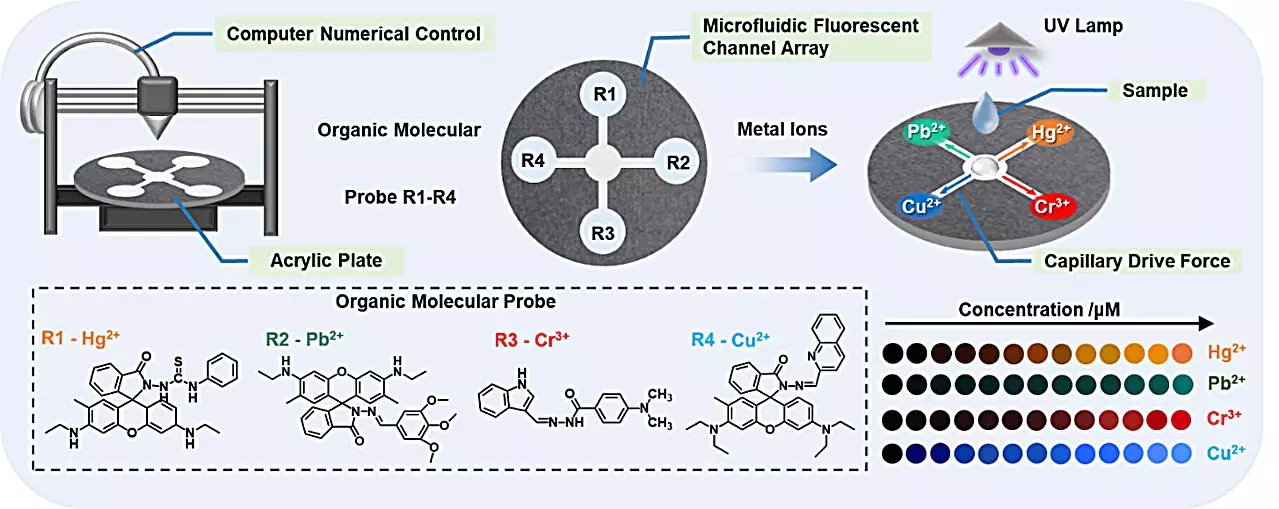In a groundbreaking development, researchers from the Hefei Institutes of Physical Science—part of the esteemed Chinese Academy of Sciences—have unveiled an advanced microfluidic sensor array designed to revolutionize the way we monitor water quality by detecting multiple heavy metal ions in real time. Spearheaded by Prof. Jiang Changlong, this research represents a monumental leap in environmental safety tools, offering precise capabilities to visualize and quantitate hazardous pollutants directly in water sources. The details of this compelling study are elaborated in the *Chemical Engineering Journal*.
The Urgency of Addressing Heavy Metal Pollution
Heavy metals, including notorious culprits such as mercury (Hg2+), lead (Pb2+), chromium (Cr3+), and copper (Cu2+), pose significant threats to human health and ecosystem integrity. Their presence in water systems usually stems from industrial runoff, mining operations, and improper waste disposal. The consequences of contamination are dire, often resulting in devastating ecological impacts and severe public health issues. Traditional detection methods have long been criticized for their inefficiencies: they typically operate on a single metal basis and are time-consuming, hindering prompt responses to pollution events. The new microfluidic technology promises to sidestep these challenges, paving the way for more timely interventions.
Breaking Boundaries with Microfluidic Innovation
What sets these novel sensors apart is their architecture and functionality. Using acrylic plates that harness capillary forces, researchers have crafted a network of microfluidic channels that allow for intricate manipulation of fluid movements. This innovative design not only streamlines the process of detection but also amplifies sensitivity and accuracy. The true genius, however, lies in the integration of organic fluorescent probes—affordable yet highly effective molecules that bind selectively to specific heavy metal ions, generating a distinctive fluorescent response. This feature is essential for visual identification of contaminants, bringing a much-needed tangible aspect to water quality monitoring.
Real-Time Monitoring: The Game Changer
A notable highlight of this technology is its dual capability: it not only detects but also quantifies the presence of heavy metals instantaneously. By combining the microfluidic sensor with a smartphone equipped with color recognition technology, users can achieve real-time monitoring with minimal effort. This accessibility transforms the complex task of water testing into an easy, user-friendly experience. Imagine a scenario where citizens can simply use their smartphones to assess the safety of their drinking water or local waterways, providing empowerment through enhanced awareness.
A Vision for the Future of Water Safety
The implications of this innovation extend far beyond mere detection; they’re a clarion call for a proactive stance on environmental health. By offering an efficient, cost-effective solution to heavy metal contamination, this technology bridges the gap between scientific capability and public health needs. It underscores the urgent requirement for tools that allow individuals and communities to take charge of their water quality, ultimately fostering a safer, healthier environment for all. While the study marks a significant contribution to the field, it also invites collaboration between academia, industry, and policymakers to ensure that this technology reaches those who need it most.

